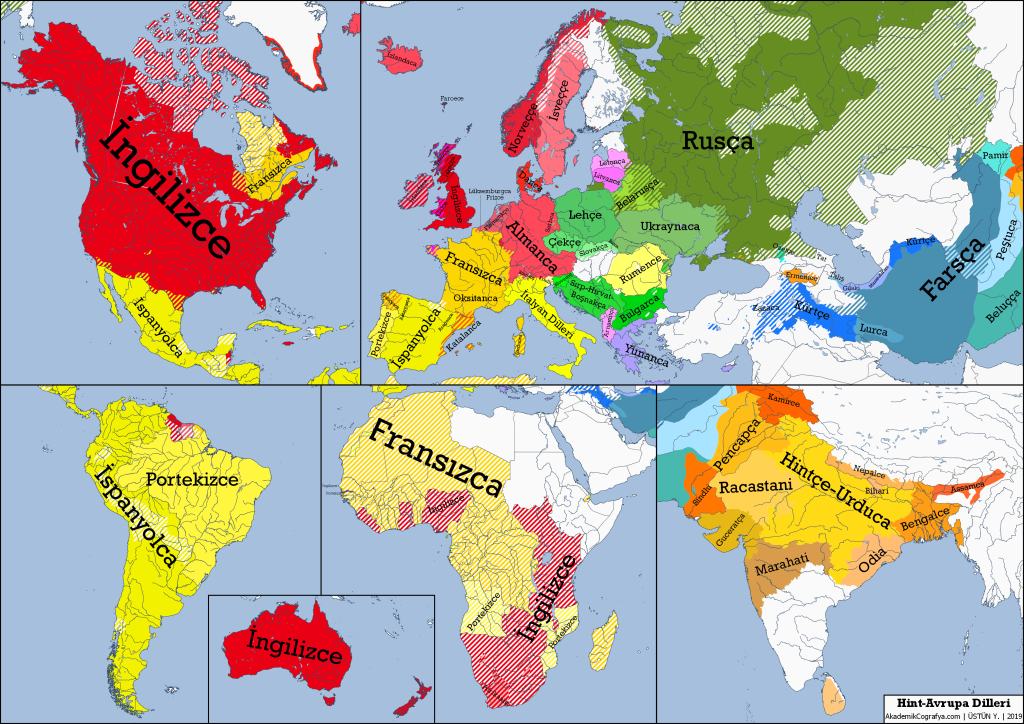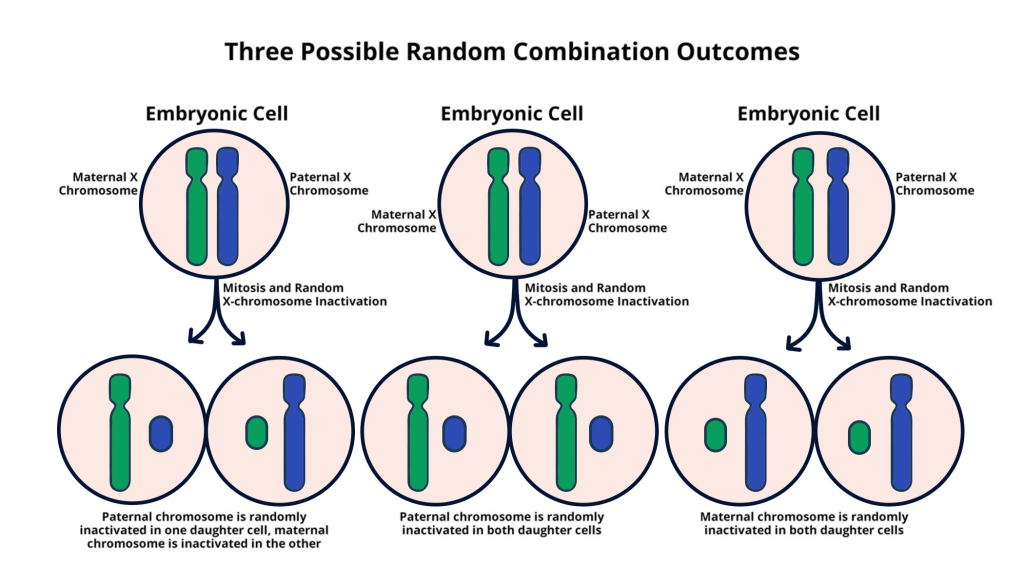
The Indo-European languages, a vast family spoken by over 40% of the global population, trace their origins back to a pivotal group of people in present-day Russia, known as the Caucasus Lower Volga. Recent genetic studies have revealed that these linguistic pioneers emerged during the Eneolithic period around 6,500 years ago, stirring interest in the evolution of human language. Among the prominent theories, the Yamnaya people stand out, believed to have played a crucial role in shaping these languages as they migrated across Europe and beyond. This research not only elucidates the journey of the Indo-European languages but also enhances our understanding of cultural exchanges that occurred during ancient times. By reconstructing the genetic lineage of these early speakers, we gain valuable insights into the profound influence they had on subsequent civilizations and their languages.
When exploring the ancestral roots of modern languages, one cannot overlook the significant linguistic family known as Indo-European languages. This group encompasses numerous dialects spanning across continents, all tracing back to a common ancestor. Linguistic historians and geneticists alike have conducted extensive research into the migrations and cultural phenomena associated with these languages, particularly focusing on the Yamnaya culture during the Eneolithic and its interactions with various ethnic groups in Eurasia. The phenomenon of linguistic dispersal is meticulously analyzed, with discussions centering around the genetic reconstruction of these vernaculars, revealing how ancient populations, including the Caucasus Lower Volga, laid the groundwork for languages that are still spoken today. As scholars dive deeper into this historical tapestry, the connections between ancient peoples and their languages continue to be a rich area for exploration.
Unveiling the Origin of Indo-European Languages
The recent groundbreaking studies published in *Nature* have provided compelling evidence pinpointing the origins of the Indo-European languages to the Caucasus Lower Volga region around 6,500 years ago. This finding unravels a long-standing mystery surrounding the linguistic family’s genesis, which is crucial as it includes over 400 languages spoken by more than 40% of the global population today. By leveraging DNA analysis, researchers like David Reich and his team have uncovered genetic ties between various ancient populations, indicating that the speakers of these early languages mixed with local communities, ultimately leading to the diverse range of Indo-European languages we see in modern times.
The significance of this research extends beyond linguistics and touches upon the broader narrative of human history. The identification of the Caucasus Lower Volga people highlights a dynamic period known as the Eneolithic, during which cultural traditions began to spread across Eurasia. As Dr. Anthony noted, the Yamnaya people emerged as pivotal figures in this transition, acting as catalysts for the dissemination of a proto-Indo-European language. These developments underscore the intricate relationship between language, culture, and human migration patterns, establishing a foundational understanding of how language families evolve.
The Role of the Yamnaya People in Language Evolution
The Yamnaya culture, often framed within the context of the Eurasian steppe’s pastoralists, played a critical role in the dissemination of Indo-European languages. During the Eneolithic period, these nomadic herders not only introduced advanced farming techniques and distinct burial practices but also shaped the lexicon and grammar structures of the languages that would dominate vast regions of Europe and beyond. As they expanded their territories from the steppes north of the Black Sea to as far west as Ireland, they effectively became the vessels of a linguistic legacy that resonates to this day.
Moreover, the Yamnaya’s innovative use of horses and wheeled vehicles revolutionized transport and trade across regions, further facilitating cultural exchanges that enriched language development. The interplay between genetic information and linguistic evolution examined in the recent research underscores the importance of recognizing historical migrations as a significant factor in the evolution of languages. The findings illustrate that cultural and linguistic transmission was not merely a one-way street; rather, it involved complex interactions between diverse groups, leading to a rich tapestry of languages stemming from a common ancestral tongue.
Deciphering Linguistic Linkages: Genetic Reconstruction of Languages
In an age where genetics increasingly intersects with linguistics, the efforts to reconstruct the ancestry of Indo-European languages offer a novel perspective on historical linguistics. By analyzing ancient DNA, researchers can trace lineage connections among various populations and establish clearer timelines for when these populations might have exchanged languages and cultural practices. The implications of genetic studies, particularly regarding the interplay between the Yamnaya and their contemporaries, reveal that language evolution is often a reflection of broader demographic shifts and social interactions.
This genetic reconstruction has provided insights into previously unidentified relationships among Indo-European languages, illustrating how populations, including the Caucasus Lower Volga people, have contributed to this linguistic family. These findings support earlier hypotheses about the geographical and cultural intertwining of ancient communities. By merging data from archaeology, linguistics, and genetics, researchers are painting a more comprehensive picture of how languages have diverged, evolved, and sometimes vanished throughout history, underscoring the complexity behind the linguistic landscape we encounter today.
The Steppe Hypothesis and Linguistic Transformations
The steppe hypothesis, which postulates that the origins of Indo-European languages are rooted in the Eurasian steppes, has garnered significant attention throughout the years. This hypothesis provided a foundational framework for understanding how languages spread across Europe and into Asia. Recent studies corroborate this theory, highlighting the migration of the Yamnaya people as a pivotal moment in the evolution of linguistic structures that would go on to define numerous modern languages, from Latin and Sanskrit to Greek and beyond.
Additionally, the research sheds light on the concept of cultural diffusion—how the Yamnaya people, through their trades and encounters with other societies, influenced not just the languages of their time but also the socio-cultural fabric of the regions they inhabited. This burgeoning understanding emphasizes the dynamic nature of language as it adapts and transforms in response to human migration and intercultural exchanges, reinforcing the idea that the history of language is about more than mere vocabulary; it encapsulates our shared human experiences.
Impact of Genetic Data on Understanding Language Families
The innovative use of genetic data to inform linguistics has changed the landscape of how scholars approach language origins. The studies conducted on ancient DNA from sites in present-day Russia and Ukraine provide a genetic map that supports historical linguistics and enhances our understanding of Indo-European languages’ development. Not only does this research offer clarity regarding the lineage and geographic spread of these languages, but it also highlights the significance of genetic markers in tracing the pathways of human migration and cultural exchange across generations.
As researchers continue to delve into the genetic fabric of ancient populations, the connections drawn between language and genetics will enable a more nuanced understanding of how modern dialects emerged from their ancestral roots. This synergistic approach will further clarify the intricate history of the Indo-European language family, bolstering theories related to linguistic reconstructions while revealing the complex narratives of cultural interaction that facilitated their growth.
Cultural Indicators: Kurgans and Language Development
The cultural practices surrounding kurgans, the burial mounds associated with the Yamnaya and their predecessors, offer additional insights into the historical context of Indo-European language development. These monumental structures not only served as striking markers of the societies that created them but also reflected the burial customs and social hierarchies prevalent among early Indo-European speakers. The continuity of these practices across generations highlights how language and culture are deeply intertwined, often emerging from shared traditions and communal identities.
By studying these ancient burial sites, archaeologists gain a wealth of information regarding the socio-political dynamics of the time, which can correlate with linguistic shifts and transformations. The genetic evidence linking the Yamnaya to the Caucasus Lower Volga suggests that as these communities interacted, their languages also evolved, influenced by both internal developments and external exchanges. This underscores the thesis that kurgans not only commemorate the dead but also serve as silent witnesses to the vibrant linguistic landscape that characterized their societies.
Challenges in Research: Fragmented Studies amid Conflict
The ongoing conflict in Ukraine has posed significant challenges for researchers studying the origins of Indo-European languages. While groundbreaking findings were published that connect ancient DNA samples to the Caucasus Lower Volga people and the Yamnaya culture, the realities of conducting collaborative research in a conflict zone have made the dissemination of knowledge more complex. The two linked studies highlight this fragmentation, as one relies on archaeological findings from Russia, while the other incorporates samples from Ukraine and Moldova.
These geopolitical tensions not only hinder research collaborations but also disrupt the flow of information necessary for understanding the full scope of Indo-European linguistic origins. As David Reich noted, such divisions impede the ability for scholars to work together, yet the determination to piece together this historical puzzle continues. Ongoing efforts to bridge these gaps are essential to ensure that the rich narratives of human history related to language evolution are thoroughly explored and accurately represented.
Future Research Directions in Indo-European Studies
Looking forward, the field of Indo-European studies stands at a critical juncture where emerging technologies and interdisciplinary approaches could redefine traditional understandings of language origins. With advancements in genetic sequencing and analysis, researchers are equipped to explore deeper connections between linguistic families and ancient populations across broader geographical contexts. This podría lead to discover previously unnoticed linguistic ties and cultures that contributed to the rich tapestry of Indo-European languages.
Future research must embrace a comprehensive perspective that marries genetics with archaeology and linguistics, ensuring that the complex narratives of how languages adapt and evolve in response to environmental and social stimuli are adequately captured. The ongoing collaborations among linguists, historians, and geneticists will be essential in constructing a unified framework that acknowledges the multifaceted history of Indo-European languages while also considering the wider implications of cultural interactions that transcend borders.
Frequently Asked Questions
What is the origin of Indo-European languages and their connection to the Caucasus Lower Volga?
The origin of Indo-European languages can be traced back to the Caucasus Lower Volga region, where early speakers lived around 6,500 years ago during the Eneolithic period. These ancestors of the Indo-European language family interacted with surrounding populations, forming the basis for the spread of these languages across Europe and parts of Asia.
How did the Yamnaya people influence Indo-European languages?
The Yamnaya people, who emerged from the Caucasus Lower Volga region, played a crucial role in the dissemination of proto-Indo-European languages. They were nomadic pastoralists known for their innovation in mobility and agriculture, which enabled them to spread their language and culture across vast territories, ultimately shaping the linguistic landscape of Europe and parts of Asia.
What role did genetic reconstruction play in understanding the evolution of Indo-European languages?
Genetic reconstruction has been instrumental in tracing the lineage of speakers of Indo-European languages. By analyzing ancient DNA from populations such as the Caucasus Lower Volga and Yamnaya peoples, researchers were able to establish connections and migrations that reveal how languages evolved and spread, supporting the steppe hypothesis of language origins.
What were the cultural traditions of the Yamnaya people regarding language and burial practices?
The Yamnaya people, linked to the origins of Indo-European languages, had distinctive cultural traditions that included the burial of their dead in kurgans, or large earth-mounded tombs. This practice not only reflects their societal beliefs but also provides archaeological insights that help researchers understand the migration and linguistic patterns of these ancient populations.
How do the recent studies on Indo-European language origins enhance our understanding of ancient migrations?
Recent studies highlighting the role of the Caucasus Lower Volga people and Yamnaya in the emergence of Indo-European languages enhance our understanding of ancient migrations by providing genetic evidence that supports existing linguistic and archaeological theories. This unifying genetic picture helps clarify how these early populations interacted and spread their languages across different regions.
What is the significance of the Eneolithic period in the study of Indo-European languages?
The Eneolithic period is significant in the study of Indo-European languages as it marks the timeframe around 6,500 years ago when the Caucasus Lower Volga people, considered the ancestors of these languages, were active. Their cultural and linguistic developments during this period laid the foundations for the complex web of Indo-European languages that followed.
What discoveries were made regarding the Anatolian speakers of Indo-European languages?
Recent genetic research indicated that the Anatolian speakers, who existed during the Bronze Age, may have diverged from proto-Indo-European speakers before the expansion of the Yamnaya. This suggests that while they shared linguistic roots, they represent an early split in the evolution of Indo-European languages, requiring further exploration of their origins.
How did the war in Ukraine affect research on Indo-European languages?
The ongoing conflict in Ukraine has complicated collaborative efforts among researchers studying Indo-European languages. Despite these challenges, significant findings about the Yamnaya and their linguistic contributions emerged from DNA analyses of ancient populations in both Ukraine and Russia, underlining the historical importance of the region in understanding language development.
| Key Points | Details |
|---|---|
| Origin of Indo-European Languages | Identified as originating from the Caucasus Lower Volga people in present-day Russia around 6,500 years ago. |
| Significance of Research | Provides genetic evidence linking Yamnaya and Anatolian speakers to a common ancestor, solving long-held linguistic puzzles. |
| Cultural Contributions | Yamnaya people noted for their mobility and early adoption of herding and wagon technology, influencing many cultures across Europe and Asia. |
| Genetic Findings | Research reveals connections between ancient DNA from different regions, highlighting the complex migrations and mixing of populations influencing modern Europeans. |
| Research Challenges | Ongoing geopolitical issues hinder cooperation among scholars from affected regions. |
Summary
Indo-European languages have a fascinating history that connects over 40 percent of the global population through linguistic and genetic ancestry. Recent groundbreaking studies trace the origins of these languages back to the Caucasus Lower Volga people in Russia, providing crucial insights into the cultural and genetic intermingling that shaped languages like Latin, Greek, and Sanskrit. Understanding this heritage not only enriches our knowledge of language development but also highlights the complexity of human migration and interaction throughout history.


